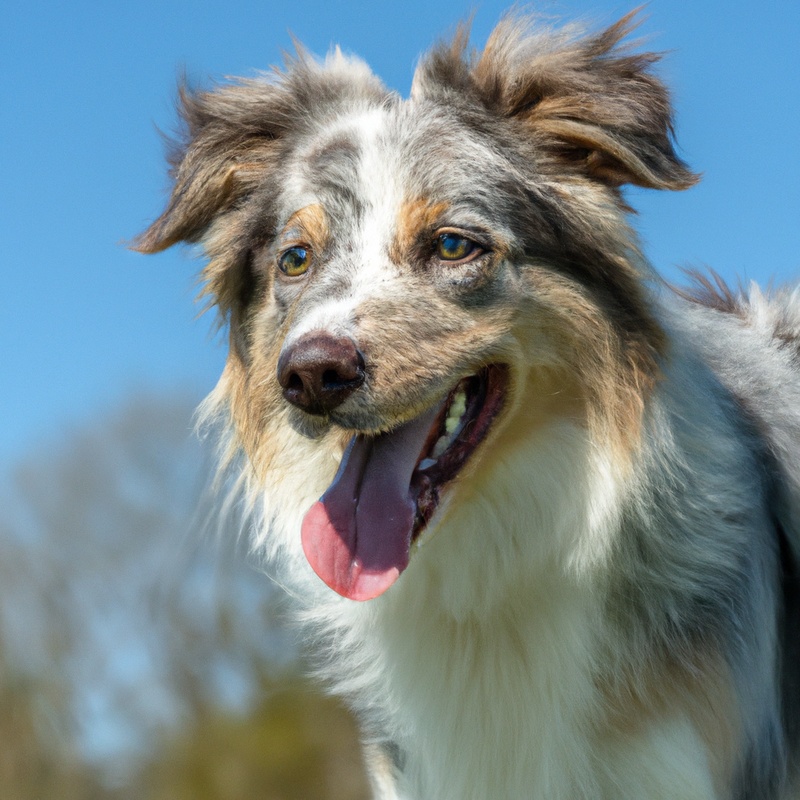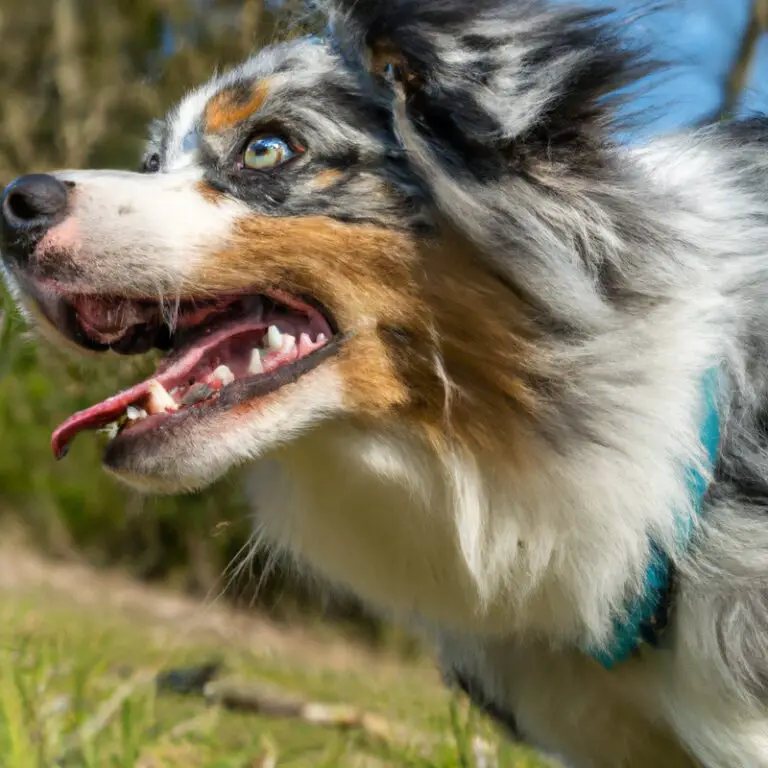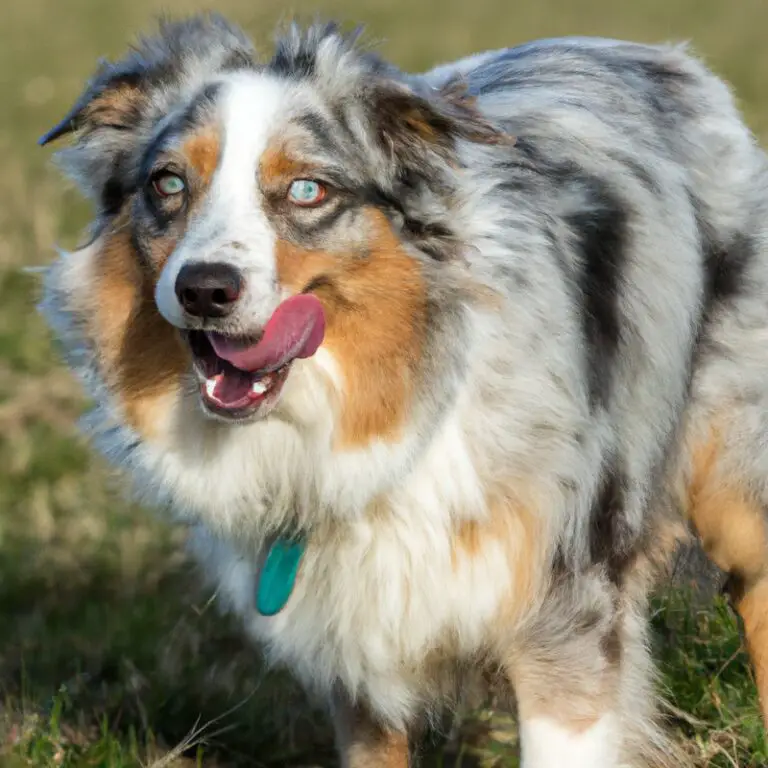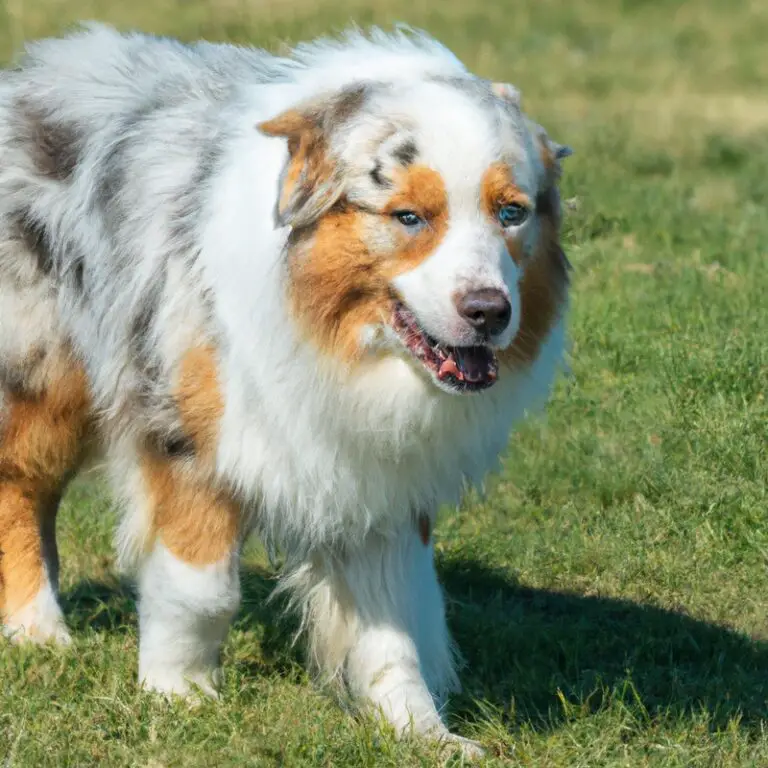Can Australian Shepherds Be Trained For Obedience Competitions?
Key Takeaways:
- Australian Shepherds can be trained successfully for obedience competitions.
- Positive reinforcement methods are effective in training Australian Shepherds.
- Consistency and patience are key to training Australian Shepherds for obedience competitions.
- Early socialization is important for Australian Shepherds to excel in obedience training.
Are you a proud Australian Shepherd owner who dreams of competing in obedience competitions? Well, you’re in the right place! In this article, I’ll share with you my expertise on training Australian Shepherds for these exciting events.
We’ll delve into the importance of early training and socialization, the basics of obedience training, and how to teach essential commands.
Plus, I’ll let you in on some tips and tricks for successful competition training, preparing for competitions, and participating in them with your Aussie. So, buckle up, because we’re going on a journey to unleash the full potential of your Australian Shepherd!
| Yes | No | |
|---|---|---|
| Trainability | ✓ | |
| Intelligence | ✓ | |
| Alertness | ✓ | |
| Focus | ✓ | |
| Energy Level | ✓ | |
| Physical Abilities | ✓ | |
| Cooperative | ✓ | |
| Temperament | ✓ | |
| Drive | ✓ | |
| Handler Skills | ✓ | |
| Training Methods | ✓ | |
| Consistency | ✓ | |
| Time Commitment | ✓ | |
| Experience | ✓ |
Training Australian Shepherds for Obedience Competitions
Importance of Early Training and Socialization
Early training and socialization are key factors in raising a well-behaved and social Australian Shepherd. It is important to start training your Australian Shepherd from a young age to establish good habits and behaviors.
Early training helps in shaping their personality and teaching them appropriate manners and obedience commands.
Additionally, socializing your Australian Shepherd early on is crucial for their development. Introducing them to different people, animals, and environments helps prevent behavior issues and promotes confident and friendly behavior.
Overall, investing time and effort in early training and socialization lays a solid foundation for a well-adjusted and obedient Australian Shepherd.
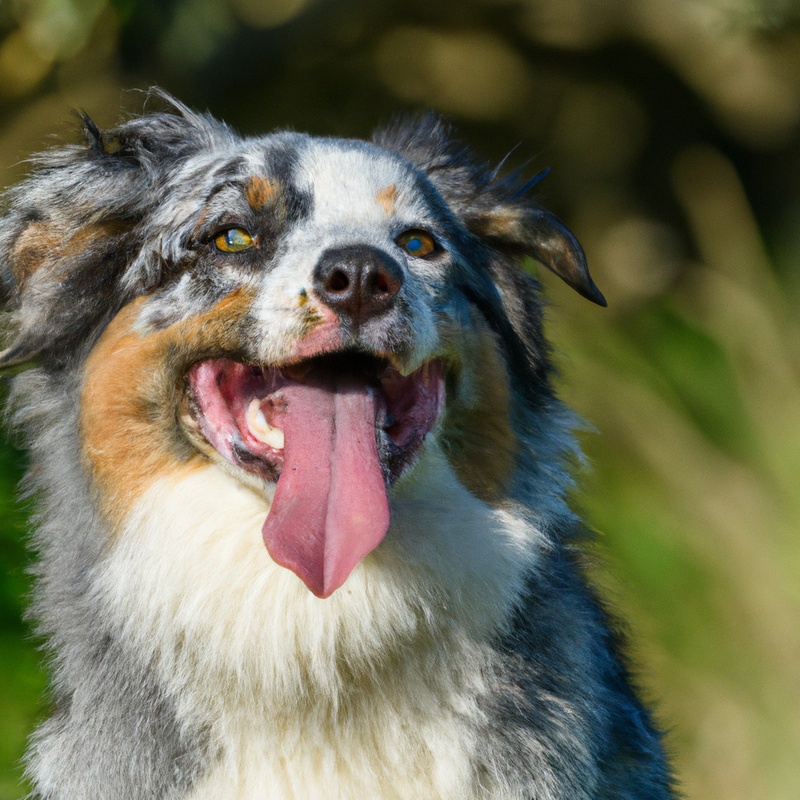
Basics of Obedience Training for Australian Shepherds
Teaching Essential Obedience Commands
Teaching essential obedience commands to Australian Shepherds is an important part of their training journey. Here are some key commands you should focus on:
- “Sit”: Start by holding a treat above your dog’s head and slowly moving it back, causing them to naturally lower into a sitting position. Once they’re sitting, give them the treat and praise them.
- “Stay”: Begin with your dog in a sitting or standing position. Extend your palm towards them and say “stay” while taking a step back. Reward them if they maintain their position. Gradually increase the distance and duration of the stay.
- “Down”: With your dog in a sitting position, hold a treat near their nose and gently lower it to the ground, encouraging them to lie down. Reward them when they achieve the down position.
- “Come”: Using a happy and excited tone, call your dog’s name followed by “come.” Encourage them to come to you and reward them with praise, treats, or play.
- “Leave it” and “Drop it”: Start by showing your dog a treat and saying “leave it.” If they try to take it, cover the treat with your hand or place it out of their reach. Once they lose interest, reward them with another treat. For “drop it,” trade the item they have in their mouth for a treat or toy.
Remember, consistency and positive reinforcement are key when teaching obedience commands. Be patient, use rewards, and practice in various environments to help your Australian Shepherd master these essential commands.
Utilizing Positive Reinforcement in Training
Utilizing positive reinforcement in training is a highly effective and rewarding approach for Australian Shepherds. Positive reinforcement involves rewarding desired behaviors to encourage their repetition.
This method focuses on praising and rewarding your dog for doing the right thing, rather than punishing them for mistakes.
When using positive reinforcement, I make sure to offer treats, praise, and affection whenever my Australian Shepherd follows a command correctly or exhibits good behavior. I believe it’s important to be consistent in rewarding positive actions, as this helps reinforce the behavior and encourages your dog to continue performing well.
One technique I find helpful is clicker training, where a clicker is used to signal to the dog that they have done something correctly.
This helps them associate the sound with receiving a reward and reinforces the desired behavior. It’s crucial to remember that using positive reinforcement doesn’t mean ignoring unwanted behaviors.
Instead, focus on redirecting your dog to more appropriate actions and rewarding those instead.
For example, if your Australian Shepherd jumps on guests, redirect their attention to sitting and reward them when they comply. By consistently utilizing positive reinforcement in training, you can create a strong bond with your Australian Shepherd and foster a positive learning environment.
This approach not only enhances their obedience skills but also strengthens the trust and relationship between you and your furry friend.
Addressing Challenges and Problem Behaviors
Addressing challenges and problem behaviors is an important aspect of training Australian Shepherds for obedience competitions. Here are some common challenges and how to address them:
- Excessive Energy: Australian Shepherds are energetic dogs, which can make obedience training challenging. To address this, provide regular exercise and mental stimulation to help them release their energy in a positive way before training sessions. Incorporate activities like long walks, hikes, or playtime with puzzle toys.
- Distractions: Australian Shepherds can be easily distracted by their surroundings, making it difficult to maintain focus during training. Start in a quiet, controlled environment and gradually increase the level of distractions. Use positive reinforcement techniques, such as treats or praise, to encourage them to ignore distractions and focus on the training commands.
- Herding Instincts: Australian Shepherds have strong herding instincts, which may manifest in behaviors like nipping at heels or chasing moving objects. To address this, teach them a “leave it” or “stay” command to redirect their attention when these behaviors occur. Consistent training and positive reinforcement will help them understand appropriate behavior.
- Separation Anxiety: Australian Shepherds can develop separation anxiety, leading to unwanted behaviors when left alone. Gradual desensitization and counter-conditioning techniques can help reduce anxiety. Start by leaving them alone for short periods and gradually increase the duration, while providing comfort and rewards for calm behavior.
- Leash Reactivity: Some Australian Shepherds may display reactive behaviors when on a leash, such as barking or pulling. To address this, practice leash training in controlled environments, gradually exposing them to different stimuli. Use positive reinforcement, rewarding them for calm behavior and redirecting their attention away from triggers.
Remember, patience, consistency, and positive reinforcement are key when addressing challenges and problem behaviors. Seek guidance from a professional dog trainer if needed, as they can provide personalized strategies tailored to your Australian Shepherd’s specific needs.
Happy training!
Tips for Successful Obedience Competition Training
Setting Realistic Training Goals
Setting realistic training goals is a key aspect of successful obedience competition training for Australian Shepherds. It’s important to have a clear understanding of your dog’s potential and limitations when setting these goals.
Start with small, achievable goals that build on your dog’s existing skills and abilities.
This will help keep you and your dog motivated and prevent frustration. As your dog progresses, you can gradually increase the difficulty of the goals.
Remember, each dog learns at their own pace, so be patient and flexible in adjusting your goals as needed.
Establishing a Consistent Training Routine
Establishing a consistent training routine is key when training your Australian Shepherd for obedience competitions. Consistency helps your dog understand what is expected of them and reinforces their learning.
To establish a consistent training routine, I recommend setting aside specific times for training sessions.
Consistency in timing helps your dog anticipate and focus during training. It’s also important to choose a designated training area where distractions are minimized.
This allows your dog to fully concentrate on the commands and exercises.
During each training session, make sure to have a clear plan of what skills or commands you want to work on. Break down the training into short, focused sessions to keep your dog engaged and prevent them from becoming overwhelmed.
Remember to include regular breaks for both you and your dog to rest and recharge.
Consistency also applies to your approach in training. Use the same verbal cues for commands and be consistent in your expectations.
Reward your dog for correct responses and provide gentle corrections for mistakes.
Consistency in your actions and responses helps your dog understand what is expected of them and gives them confidence in their training. Lastly, consistency extends beyond training sessions.
It’s important to reinforce the training throughout the day by incorporating the commands into daily activities.
For example, practicing “sit” before mealtimes or “stay” before opening doors. These consistent reminders reinforce the training and help your dog generalize the commands in different situations.
By establishing a consistent training routine, you are setting your Australian Shepherd up for success in obedience competitions.
Remember, patience and persistence are key, and building a strong bond with your dog through consistent training will lead to great results. Keep up the good work!
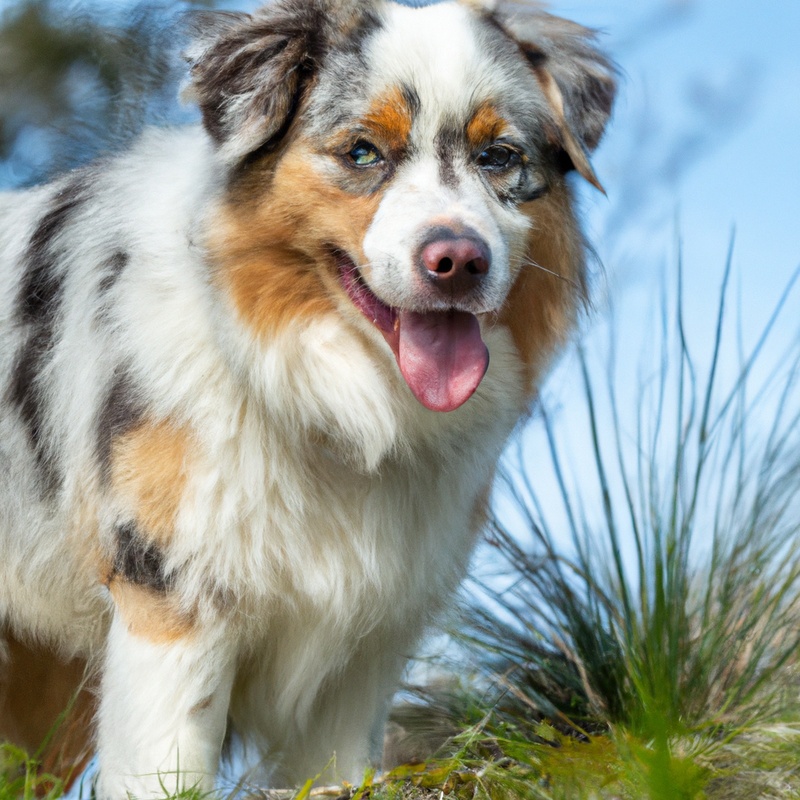
Incorporating Variety to Keep Training Engaging
Incorporating variety in your Australian Shepherd’s obedience training is essential to keep them engaged and motivated. Dogs, like humans, can get bored with repetitive routines, so it’s important to mix things up to keep their interest level high.
Here are some tips to help you add variety to your training sessions:
- Use different environments: Take your training sessions outside to the park, beach, or a friend’s backyard. Exposing your Australian Shepherd to different surroundings will make their training more interesting and challenging.
- Introduce new exercises: Teach your dog new tricks and commands to keep their mind stimulated. You can try teaching them advanced obedience skills, agility, or even some fun tricks like fetching specific objects or performing simple stunts.
- Vary training tools: Experiment with different training tools like clickers, target sticks, or treat dispensers. Each tool offers a unique way to communicate with your dog and can add variety to the training process.
- Play interactive games: Incorporate interactive games into your training routine. Hide and seek, fetch, or tug of war can be used as rewards during training sessions, making them more enjoyable for your Australian Shepherd.
- Modify training duration: Instead of long training sessions, break them down into several shorter sessions spread throughout the day. This allows your dog to stay focused and prevents boredom or fatigue.
Remember, the key is to make training sessions enjoyable and exciting for both you and your Australian Shepherd. By incorporating variety into your training routine, you’ll keep your dog engaged, motivated, and eager to learn new things.
Happy training!
Building a Strong Bond with Your Australian Shepherd
Building a strong bond with your Australian Shepherd is essential for successful obedience training. Here are some tips to help you establish a deep connection with your furry friend.
- Spend quality time together: Dedicate regular time for activities that both you and your Australian Shepherd enjoy. This could include going for walks, playing games, or simply snuggling on the couch. The more time you spend together, the stronger your bond will become.
- Positive reinforcement: Use rewards and praise to reinforce good behavior. When your Australian Shepherd follows a command or displays desirable behavior, reward them with treats, toys, or verbal praise. This positive reinforcement helps strengthen the bond between you and your dog.
- Train with consistency and patience: Consistency is key when training your Australian Shepherd. Establish clear rules and expectations, and be patient as your dog learns. Avoid getting frustrated or resorting to punishment, as this can strain your bond and hinder progress.
- Communicate effectively: Dogs are highly perceptive to human emotions and body language. Use clear and consistent commands along with non-verbal cues to communicate effectively with your Australian Shepherd. This will build trust and understanding between you.
- Incorporate play into training: Make training sessions fun and enjoyable for your Australian Shepherd by incorporating play. Use games and interactive toys to engage their natural herding instincts and keep them mentally stimulated. This will strengthen the bond between you while making training more enjoyable.
- Practice regular exercise: Australian Shepherds are an energetic and intelligent breed. Regular exercise is essential for their physical and mental well-being. Engaging in activities such as agility, hiking, or fetch not only exhausts their energy but also helps strengthen your bond through shared experiences.
- Grooming sessions: Regular grooming sessions provide an opportunity for bonding. Use this time to give your Australian Shepherd gentle massages, brush their coat, and check for any health issues. This bonding experience will help create a positive association with grooming and enhance your relationship.
Remember, building a strong bond with your Australian Shepherd takes time and effort. Be patient, understanding, and consistent in your training approach.
With love, dedication, and positive reinforcement, you’ll create a strong and trusting relationship with your furry companion.
Finding Professional Training Assistance if Needed
If you find that you need some extra help in training your Australian Shepherd for obedience competitions, don’t hesitate to seek assistance from a professional trainer. They have the expertise and experience to guide you and your dog towards success.
Look for trainers who specialize in obedience training and have a good reputation in the field.
You can ask for recommendations from other dog owners or search online for trainers in your area. Working with a professional can provide valuable insights, help address any specific challenges you may be facing, and ensure that you and your Australian Shepherd are on the right track to competition readiness.
Preparing for Obedience Competitions with Australian Shepherds
Familiarizing Your Dog with Competition Environment
Familiarizing your dog with the competition environment is essential for success. Start by gradually exposing your Australian Shepherd to different competition-like situations, such as practicing obedience commands in busy parks or attending training classes with other dogs.
This will help them get used to distractions and build confidence.
Additionally, simulate competition scenarios at home by setting up obstacles and practicing obedience exercises. Remember to reward your dog for good behavior and gradually increase the level of difficulty as they become more comfortable.
Practicing in Different Locations and Distractions
Practicing in different locations and distractions is an important part of preparing your Australian Shepherd for obedience competitions. It helps them become comfortable and focused in various environments, which is crucial for success in competitions.
When practicing in different locations, start with familiar environments and gradually introduce new places.
This helps your dog adjust to different smells, sounds, and distractions. It also teaches them to focus on you and ignore potential distractions.
Try practicing in parks, busy streets, and other public areas.
This will expose your Australian Shepherd to various distractions like people, other animals, and noises. Begin with simple commands and gradually increase the difficulty as your dog becomes more comfortable and confident.
Remember to be patient and consistent during training sessions.
Reward your dog for successful responses, and gradually decrease the frequency of treats as they become more proficient. By practicing in different locations and distractions, you are preparing your Australian Shepherd for the unpredictable nature of obedience competitions.
It helps them become more adaptable and focused, increasing their chances of success in the ring.
So keep practicing and have fun with your furry friend!
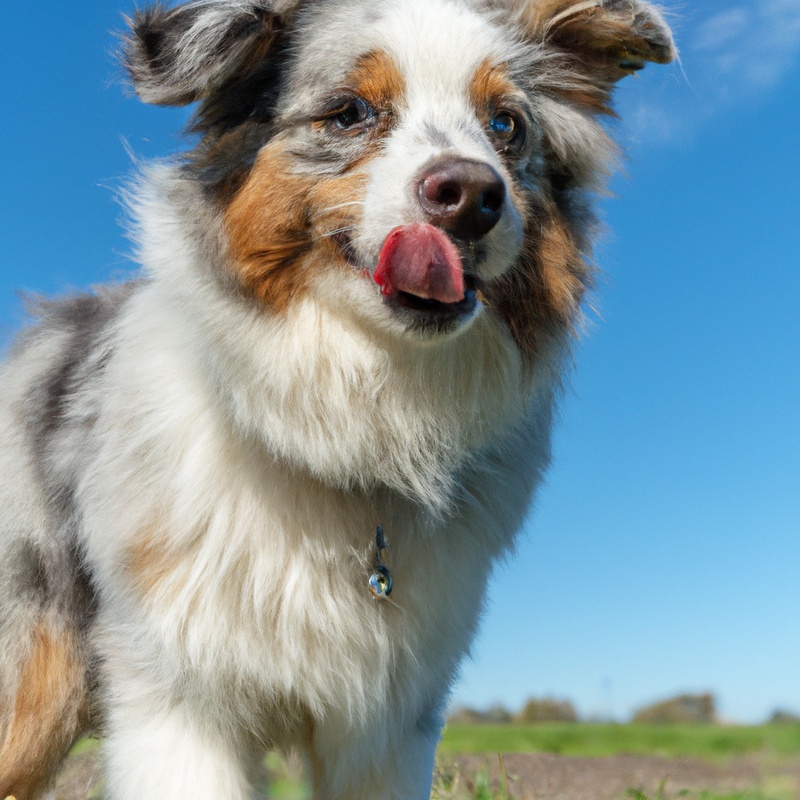
Perfecting Obedience Commands and Execution
When it comes to perfecting obedience commands and execution with Australian Shepherds, consistency is key. Practice each command regularly in short sessions, focusing on clear and precise communication.
Use positive reinforcement, such as treats or praise, to motivate and reward your dog for correct responses.
Break down complex commands into smaller steps to ensure understanding. Gradually increase difficulty by adding distractions or distance.
Always remain patient and calm, and avoid punishment or negative reinforcement.
With practice and consistency, your Australian Shepherd will excel in obedience commands.
Understanding Competition Rules and Requirements
Understanding competition rules and requirements is essential when preparing for obedience competitions with Australian Shepherds. It’s important to familiarize yourself with the specific rules and regulations of the competition you plan to enter.
This includes knowing the obedience exercises that will be evaluated, such as heeling, recalls, stays, and retrieving.
You should also be aware of any specific equipment, such as leashes or collars, that are allowed or prohibited. Additionally, understanding the scoring criteria and penalties for errors will help you train and perform more effectively.
It’s always a good idea to review the competition rules well in advance and seek clarification if anything is unclear.
By having a thorough understanding of the rules and requirements, you can better prepare yourself and your Australian Shepherd for success in obedience competitions.
Participating in Obedience Competitions with Australian Shepherds
Registering and Entering Competitions
Registering and entering obedience competitions with your Australian Shepherd is a relatively straightforward process that requires a bit of preparation. The first step is to research and find competitions that are suitable for your dog’s skill level and experience.
Look for events that offer obedience classes specifically for Australian Shepherds or for all breeds.
Once you have identified a competition, you will need to register your dog. This usually involves completing an entry form and paying a fee.
Make sure to carefully read and follow all the registration requirements and deadlines.
Some competitions may also require proof of your dog’s vaccinations. Finally, once your registration is confirmed, it’s time to prepare for the competition.
Tips for a Successful Competition Experience
When it comes to having a successful competition experience with your Australian Shepherd, there are a few tips that can make a big difference. Here’s what I suggest:
- Set realistic training goals: It’s important to have clear objectives for each training session. Start small and gradually increase the difficulty level as your dog progresses.
- Establish a consistent training routine: Regular practice is key to developing good habits and maintaining focus. Set aside dedicated time each day for training sessions with your Australian Shepherd.
- Incorporate variety to keep training engaging: Dogs can easily get bored with repetition, so mix up your training exercises and locations. This will help keep your dog engaged and motivated.
- Build a strong bond with your Australian Shepherd: A strong relationship based on trust and mutual respect is essential for a successful competition experience. Spend quality time bonding and reinforcing your connection.
- Find professional training assistance if needed: If you’re struggling with certain aspects of training or your Australian Shepherd has specific challenges, don’t hesitate to seek help from a professional trainer. They can offer guidance and expert advice tailored to your dog’s needs.
Handling Nerves and Performance Anxiety
Handling nerves and performance anxiety is a common challenge for many people, and it can also affect our furry friends. When it comes to participating in obedience competitions with Australian Shepherds, it’s important to address any anxiety they may have to ensure they perform to the best of their abilities.
One way to help your Australian Shepherd with nerves is to create a calm and positive training environment.
This means avoiding any harsh training methods or punishments, as they can increase anxiety. Instead, focus on positive reinforcement and rewards to build their confidence and trust.
Take small steps in training, gradually increasing difficulty as your dog gains more confidence.
Another helpful tip is to practice visualization techniques. Just like with human athletes, visualizing success can help your Australian Shepherd feel more confident and prepared.
Imagine the competition scenario, visualize your dog performing commands flawlessly, and picture yourself feeling calm and relaxed.
This technique can help both you and your dog feel more at ease on the day of the competition. It’s also important to remember that nerves and anxiety are normal, and it’s okay to feel a bit nervous before a competition.
Take deep breaths, focus on the bond you have with your Australian Shepherd, and remind yourself that you’ve put in the time and effort to train and prepare for this moment.
Lastly, don’t forget to celebrate small victories along the way. Recognize and reward your dog’s progress during training sessions, and remember that every step forward is a success.
By building up positive experiences and confidence in your Australian Shepherd, you can help them overcome their nerves and perform their best in obedience competitions.
Overall, handling nerves and performance anxiety in Australian Shepherds is a process that requires patience, consistency, and understanding. With the right training techniques, a positive environment, and a supportive mindset, you and your furry companion can navigate the world of obedience competitions with confidence and success.
Evaluating Competitions and Learning from Feedback
When it comes to participating in obedience competitions with your Australian Shepherd, evaluating your performance and learning from feedback is crucial for growth and improvement. After each competition, take the time to reflect on your performance and identify areas that need improvement.
Pay attention to the feedback and comments from judges and experienced competitors.
Look for patterns in the feedback to address common areas of weakness. Use this feedback as a learning opportunity to refine your training techniques and strategies.
Remember, every competition is a chance to learn and grow, so embrace feedback and use it to enhance your skills.
Final Verdict
Australian Shepherds can indeed be trained for obedience competitions. With early training and socialization, teaching essential commands using positive reinforcement, and addressing challenges along the way, these intelligent and energetic dogs can excel in obedience competitions.
By setting realistic goals, establishing a consistent training routine, incorporating variety, and building a strong bond with your Australian Shepherd, you can prepare for successful competition experiences.
Familiarizing your dog with the competition environment, practicing in different locations, perfecting obedience commands, and understanding competition rules will further enhance your chances of success. Finally, by registering for competitions, handling nerves, and evaluating your performance, you can participate in obedience competitions with confidence and continue to improve.

